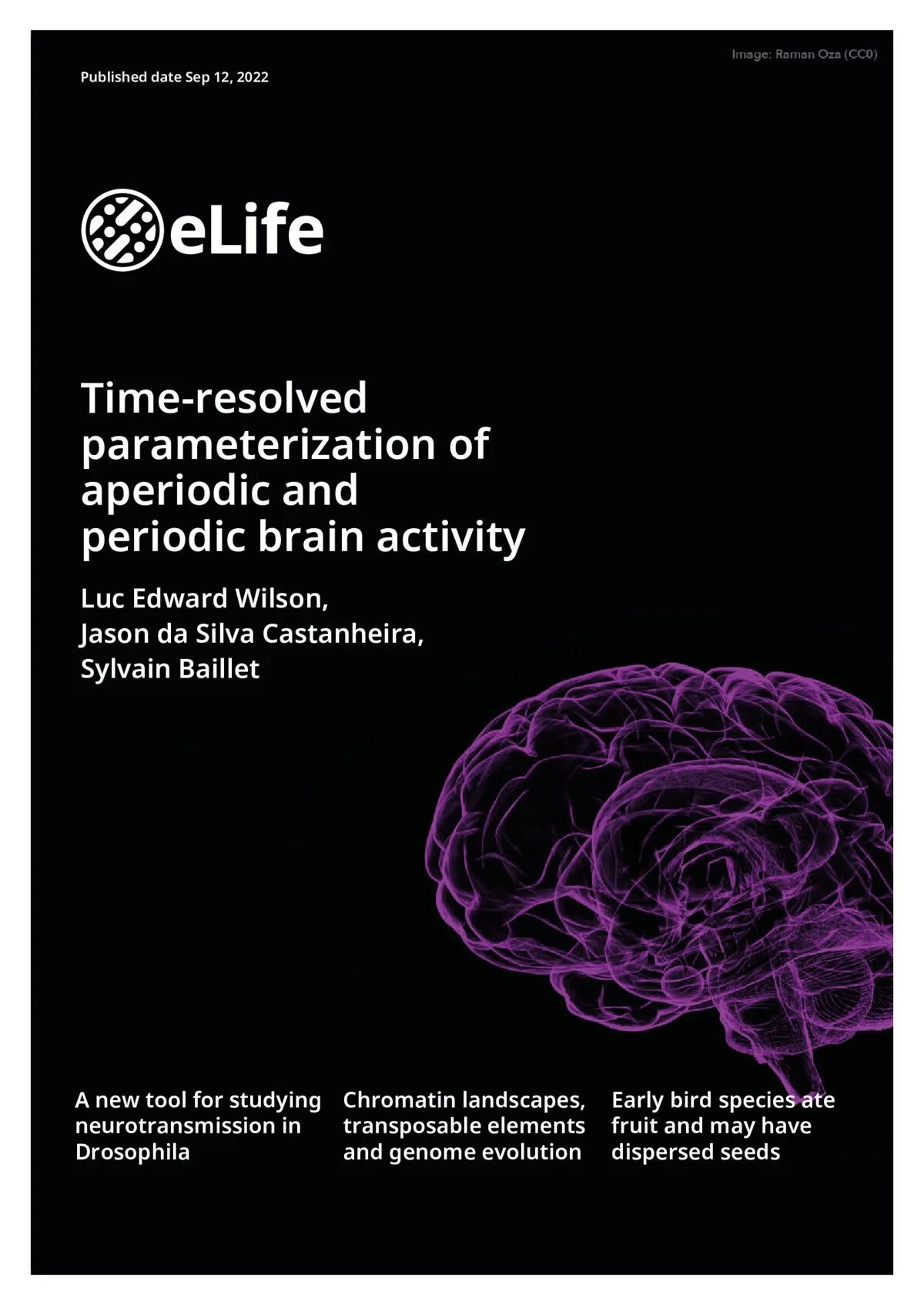Time-tracking the spectrum of complex neural dynamics.
The complexity of brain activity data is hard to fathom. Ou lab pursues methodological and empirical research objectives to clarify the nature and functions of the components that make up the signals generated by brain circuits and networks.
We publish today in eLife a new method to track how these components evolve dynamically, at the natural time scales of brain activity and behavior. Both the article and the software implementation are freely accessible.
Our understanding of brain activity has evolved to consider aperiodic and periodic components as distinct features of brain signaling. To estimate these components over time, we developed the SPRiNT algorithm (Spectral Parameterization Resolved in Time).
We show that SPRiNT can decompose brain activity into interpretable aperiodic and periodic components and track their features over time. We demonstrate the unique strengths and assets of SPRiNT with extensive simulations of naturalistic brain activity.
We briefly explore the advantages of SPRiNT on two empirical datasets. Our article highlights (1) age-related changes in the variability of oscillatory alpha activity, and (2) fluctuations in aperiodic activity while rodents shift their locomotive behaviour.
Why does this matter? Neuroscientists have long appreciated the dynamic nature of neural oscillations. With new tools for time-resolved spectral parameterization (including SPRiNT), we believe a new frontier will emerge in studying moment-to-moment changes in aperiodic brain activity.
Interested in trying out this new method? We distribute SPRiNT openly as part of the Brainstorm distribution. The SPRiNT code is also available in standalone Matlab format on Github, with a Python version in the works.



